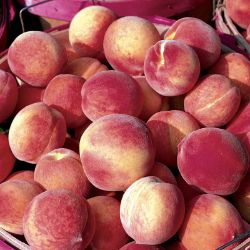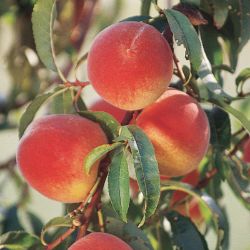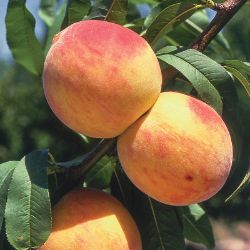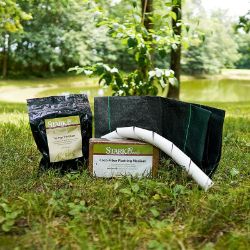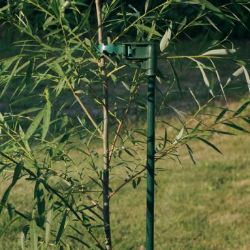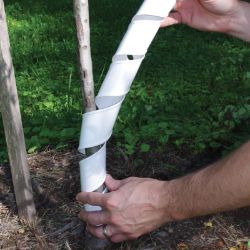Soil Preparation for Peach Trees
Preparing the soil before you plant will greatly improve your peach tree’s performance and promote healthy new growth. It is a good idea to have your soil tested prior to planting, and even annually after planting, to determine if it’s lacking in any essential minerals or nutrients. You can use one of our digital soil meters to test your soil or collect a soil sample to send to your local county Cooperative Extension for testing.
Once you know more about your soil, you can make informed decisions on amendments, like macro- or micro-nutrient fertilizers, pH correction, and water drainage.
NOTE: This is part 5 in a series of 11 articles. For a complete background on how to grow peach trees, we recommend starting from the beginning.
Common Soil Types
- Clay and silt soils are made of very small particles. They feel slick and sticky when wet. Clay and silt hold moisture well, but resist water infiltration, especially when they are dry. Puddles often form on clay or silt soils, and these soils become easily compacted.
- Loam soils are loose and look rich. When squeezed in your fist, moist loam will form a ball, which crumbles when poked with a finger. Loam soils normally absorb water and store moisture well. Loam soils can be sandy or clay-based, but are a generally a mix of sand, silt or clay, and organic matter. They will vary in moisture absorption and retention.
- Sandy soils contain large particles that are visible to the unaided eye, and are usually light in color. Sand feels coarse when wet or dry, and will not form a ball when squeezed in your fist, regardless of water content. Sandy soils stay loose and allow moisture to penetrate easily, but will not retain water for long-term use.
When to Prepare Your Soil
Soil preparation can be done any time of year that the ground is not overly saturated with water, or frozen.
Common soil amendments for peach trees include:
- Compost
- Manure
- Garden lime (raises soil pH from acid to alkaline)
- Garden sulfur (lowers soil pH from alkaline to acid)
- Sphagnum/peat moss
Your lawn can provide you with free organic materials, such as grass clippings and shredded leaves. Not only will the grass and leaves break down to provide soil nutrients naturally, but they will help compose a loose, rich soil as well. You can gather these materials in the fall with spring planting in mind.
Adding organic materials like compost will improve the composition of most every soil type. Organic materials bind sandy soil particles so they retain moisture and nutrients better. They also break apart clay and silt particles, so that water can soak in and roots can spread.














